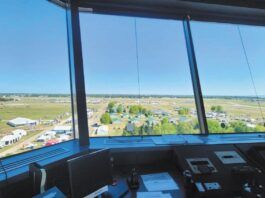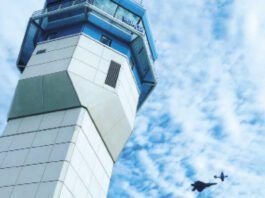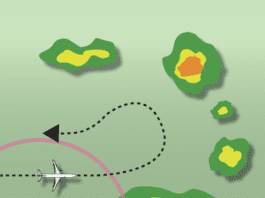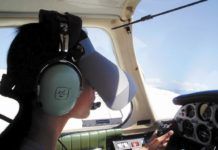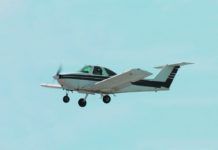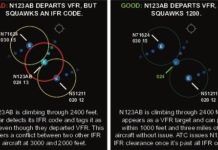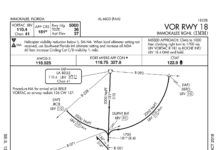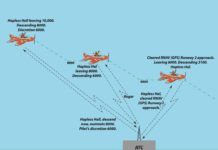Better than TAF?
A dmittedly, Im an unabashed geek, getting my jollies running statistical tests querying the actual NTSB relational database and publishing my aviation safety research in journals using scientific mumbo-jumbo-the majority (if not all) of which would put any insomniac to sleep in a heartbeat. That said Im also an active general aviation pilot. Here, Ill don both hats as I cover a hot-off-the-press scientific paper published in the Atmosphere journal, translating from highfalutin language into laymans English for the benefit of the general aviation pilot population.
How Far Can You Go?
If issued an en-route clearance limit, you will be given holding instructions. If the pattern is charted, and they rarely are, you might be issued, Hold east as published. Most moving map displays such as the G1000 and GTN series do not show published holds, necessitating a chart, but ATC will issue full holding instructions if requested. The FAA frowns on unpublished holds, saying that only those holding patterns depicted on U.S. government or commercially produced charts which meet FAA requirements should be used. This is another reason why rolling your own at JIDUK, is a shaky idea.
Comparing LPV and ILS
A rriving at your destination on a dreary day, ATC queries you with say approach requested. The landing runway has an ILS and an RNAV (GPS) approach with identical LPV minimums published. Which do you choose? You would be forgiven for thinking, as we initially did, that this is a bit of an inconsequential question. WAAS has enabled satellite guided approaches to have precision comparable to Category I ILS approaches, so what difference does it make? Although true, this doesnt mean that ILS and LPV are identical in all regards.
Hear Back, Read Back
Lets start out with a few simple examples and work our way up. One of the most-used examples is, Tower, Cessna 12345, ready for departure, Runway 14L. Cessna 12345, Tower, hold short Runway 14L. The caution below appears on many charts, but have you really assimilated what its telling you? Its simple. Essentially, if the controller says the word runway you should read back the explicit instruction: Cessna 12345, holding short Runway 14L. This is the proper way to respond.
Our Intermittent GPS Future
Various government agencies think its necessary to potentially render GPS useless throughout hundreds of square miles of the NAS nearly every single day. We who live in the West have experienced this for years. From my home in Santa Fe, NM, I get at least one, sometimes a few, notices of nearby GPS outages every week. But, more recently, those of you in the East have begun to feel more of the same pain.
Just Say It: Unable
ATC will often ask pilots if they can do something somewhat out of the ordinary for the purpose of granting a shortcut or maybe to gain that extra slice of airspace. This subtle word works on both sides of the coin. In the pattern, Tower might ask a pilot to fly a short approach that-if the pilot is unprepared and accepts it-requires a steep and fast dive. Perhaps youve been offered that so they can fit you inside of other traffic, to avoid vectoring you 10 miles out to get behind everyone. Or, perhaps they just need you to cross the approach end of the runway so they can start getting other airplanes out. Regardless, if you dont think you can safely and properly comply, bring on the PIC authority and just say it, Unable.
How Much Is Enough?
Removing the old autopilot will leave holes in the left panel that would be too ugly if we just covered them, so were going to cut new metal. Since were doing that, the shop has suggested we might consider replacing the backup analog airspeed indicator, attitude gyro, and altimeter with an integrated electronic standby instrument. Yeah, thats probably a good idea, especially right now, as the vacuum attitude indicator has been slow to come alive recently and is probably about to die.
Logging vs. Being PIC
You are an instrument-rated private pilot. Your friend is working on the rating and you have acted as her safety pilot while she practices under the hood. Shes doing great. Today ceilings are high but below final approach fix altitudes. You feel comfortable filing IFR as pilot in command while she flies, so you file and off you go in the clubs 172. No hood for your friend today. She does all the flying. Two approaches, with 12 minutes in actual instrument conditions. She did well.
Old Friends
Look around the ramp and in hangars at almost any GA airport in the country, and youll find some amazing aircraft. Youll also find some once-amazing aircraft that have been neglected and nearly abandoned for years, rendering them useless place holders. Sadly, one of those in the latter group belongs to my wife and me. (Its a Beechcraft Skipper we got for my wife to fly after we invested in the Cessna 340 Ive talked so much about.)
Exploring Every Angle
What happens if you depart on the original IFR squawk? In a word: confusion. While, you are technically VFR-you voided your clearance by departing VFR-ATCs radar doesnt know that. Itll still detect that IFR squawk and tag you up on the scope as if you were on that IFR clearance. An unexpected IFR target popping up amidst their other IFR traffic is a real distraction to a controller, especially if its an aircraft who was expected to hold for release.
Overlay Approaches
Lets connect some dots. In 1969, NARCO (now defunct) introduced the CLC-60 VORTAC Offset Control Panel that allowed navigation to a phantom fix defined as a distance and direction (rho-theta) from an existing VORTAC. It was touted as the first RNAV system. In the 80s, Bendix/Kings KNS-80 Integrated Navigation System might be considered the first practical RNAV navigator (it had VOR, LOC, DME, RNAV, and GS). Like the CLC-60, it could electronically move a VORTAC and was IFR certified.
Report Leaving
In the case of the departure, and from a certain perspective, I could call that report a requirement. The respective approach/center controller is required to verify your altitude anyway to make sure it is what they are seeing on their screens, just like the Tower controller is required to make sure you are squawking the right code before they switch you. As you continue your climb, and as annoying as it can be, the verification requests could continue on every new frequency, and certainly with each new facility. While your initial departure and the climb is where you will report leaving an altitude the most, what about when youre at cruise or even up in the flight levels?



